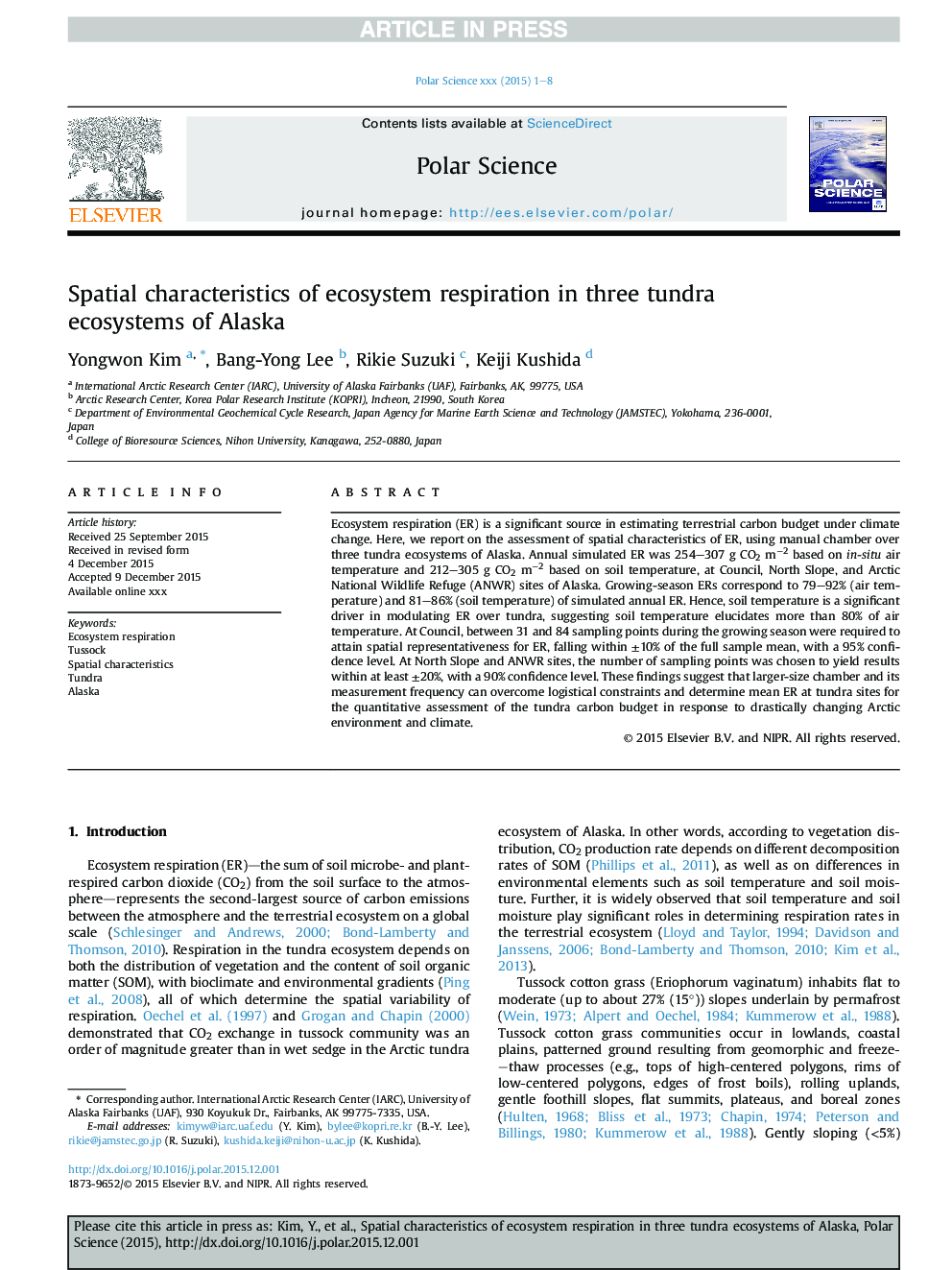| Article ID | Journal | Published Year | Pages | File Type |
|---|---|---|---|---|
| 5780594 | Polar Science | 2016 | 8 Pages |
Abstract
Ecosystem respiration (ER) is a significant source in estimating terrestrial carbon budget under climate change. Here, we report on the assessment of spatial characteristics of ER, using manual chamber over three tundra ecosystems of Alaska. Annual simulated ER was 254-307 g CO2 mâ2 based on in-situ air temperature and 212-305 g CO2 mâ2 based on soil temperature, at Council, North Slope, and Arctic National Wildlife Refuge (ANWR) sites of Alaska. Growing-season ERs correspond to 79-92% (air temperature) and 81-86% (soil temperature) of simulated annual ER. Hence, soil temperature is a significant driver in modulating ER over tundra, suggesting soil temperature elucidates more than 80% of air temperature. At Council, between 31 and 84 sampling points during the growing season were required to attain spatial representativeness for ER, falling within ±10% of the full sample mean, with a 95% confidence level. At North Slope and ANWR sites, the number of sampling points was chosen to yield results within at least ±20%, with a 90% confidence level. These findings suggest that larger-size chamber and its measurement frequency can overcome logistical constraints and determine mean ER at tundra sites for the quantitative assessment of the tundra carbon budget in response to drastically changing Arctic environment and climate.
Related Topics
Physical Sciences and Engineering
Earth and Planetary Sciences
Earth and Planetary Sciences (General)
Authors
Yongwon Kim, Bang-Yong Lee, Rikie Suzuki, Keiji Kushida,
